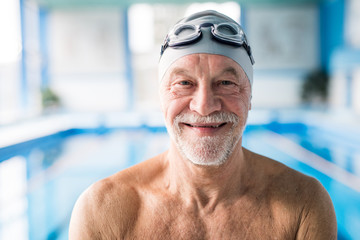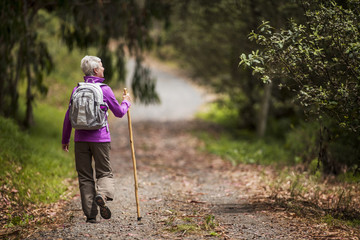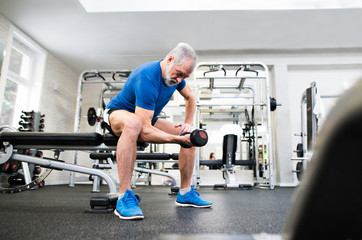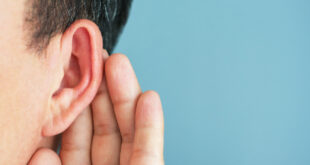 Growing old is inevitable but are you going to get frail as well as old? If you do get frail, and become dependent on others, it’s likely that your dependency will last for a long, long time. Life expectancy is going up and up, if you become frail you could be dependent on others for decades.
Growing old is inevitable but are you going to get frail as well as old? If you do get frail, and become dependent on others, it’s likely that your dependency will last for a long, long time. Life expectancy is going up and up, if you become frail you could be dependent on others for decades.
But – if your doctor gives you the okay – exercise can keep you fit and active right through your old age. It will even help keep you healthy, because exercise boosts your immune system.
Take heart disease, for instance, which is New Zealand’s biggest killer. People who exercise lightly are 32% less likely to die of heart disease.
Regular exercise also reduces the risk of New Zealand’s second highest cause of cancer death, which is bowel cancer. It reduces the risk of New Zealand’s third most common cancer, breast cancer. It reduces the risk of prostate cancer, which is the commonest cancer in men. It reduces the risk of cancer in the head and neck, the liver, the stomach, the kidney, the throat, the uterus, the rectum and the bladder.
Regular exercise is the silver bullet against cancer but it also reduces the risk of you having a stroke and a stroke is New Zealand’s second biggest killer. If you do exercise and still have a stroke people who have kept themselves fit make a better recovery from stroke than people who don’t.
Exercise even protects your brain from Alzheimer’s disease, in fact it actually repairs damaged brain cells. Exercise relieves or helps you avoid depression, too. Depression is a major ailment in today’s society but there’s no need to be a victim if you can avoid it. Finally, there’s this: people who exercise generally live longer than people who don’t, so stay fit and do what you can to stay healthy through your old age.
Which exercise?
You need to do two types of exercise: aerobic exercise and strength (anaerobic) exercise. Aerobic makes you breathe faster and more deeply, like running, swimming, cycling and even dancing. Strength exercise puts weight on your limbs.
Aerobic exercise
 Let’s look at aerobic exercise first. Walking is very popular with us older folk. You might think walking is not an exercise at all, but it is when it’s brisk walking. That’s a walk fast enough to get your heart beating a little more than usual and you are breathing a little heavier than usual. This might mean walking up that hill near your house. Or maybe you can walk to the supermarket five days a week and back with two bags of groceries. The bonus is you save on petrol!
Let’s look at aerobic exercise first. Walking is very popular with us older folk. You might think walking is not an exercise at all, but it is when it’s brisk walking. That’s a walk fast enough to get your heart beating a little more than usual and you are breathing a little heavier than usual. This might mean walking up that hill near your house. Or maybe you can walk to the supermarket five days a week and back with two bags of groceries. The bonus is you save on petrol!
If you do decide exercise outdoors, there is a bonus. You’ll get some sunlight, and sunlight is our main source of Vitamin D. Vitamin D helps our body resist osteoporosis (it means “porous bones”), and weakened bones are a major reason behind broken bones in the elderly.
Walking with a friend is good because it sort of obliges you to get out of the house, and the social contact is good exercise for your brain. If not a friend, walk with a dog. The dog needs the walk too, giving you another good reason to get moving.
It’s been proven that watching birds actually relieves stress (in you, and maybe in the birds). So a brisk walk or a run in the park with a friend and your dog, stopping to catch your breath and feed the birds, could be a great way to go.
The experts recommend a minimum of 150 minutes of aerobic exercise a week. So if you exercise five times a week, 30 minutes each time, you have achieved the minimum.
Strength (anaerobic) exercise
 Strength exercise can be done less frequently than aerobic exercise but it is important too. Here’s why: for older folk falls are the main cause of loss of independence and injury-related death. Muscle weakness is a major cause of falls, that and poor balance. Strength exercise builds muscle and improves balance.
Strength exercise can be done less frequently than aerobic exercise but it is important too. Here’s why: for older folk falls are the main cause of loss of independence and injury-related death. Muscle weakness is a major cause of falls, that and poor balance. Strength exercise builds muscle and improves balance.
The ladies reading this don’t want to be muscular, I know, but moderate strength exercise won’t make you look like a bodybuilder. It will simply restore the muscles you had when you were younger.
Finally, but importantly, strength exercise makes bone denser. We lose bone density as we age, but we can fight back with strength exercise. It also reduces the risk of osteoporosis. This disease is the main reason why elderly folk suffer from broken bones and the effects can be devastating for them and their family. A broken hip bone can disable an older person for months and require endless physical therapy. In fact some victims never recover.
Which strength exercise?
The perfect strength exercise is push-ups. They’re perfect because they require no equipment, you can do them anywhere and they use all your muscle groups – your arms, your shoulders, your trunk and your legs.
The aim is to do ten push-ups, non-stop, on the two days you do strength exercise. At first you will probably find that even doing one push-up is too hard. This video shows you how to get started easily and work your way up to doing proper push-ups:
If you find you can do only one push-up then do it, but do it ten times! Remember – your aim is to be doing ten push-ups a day, non-stop, twice a week. It won’t be easy but, in time, you will be strong enough to enjoy it. This sounds unbelievable but it’s true.
Lifting weights is another great way of building muscle, and if you join a gym the social contact is good for your mental health. Then there are resistance bands, which you can use in your homre or anywhere. These are like giant rubber bands, you stretch them with your arms and legs and this gradually builds muscle.This video shows you how to use resistance bands:
Where to from here?
To avoid become frail and dependent on others in your old age do aerobic exercise five days a week and strength exercise two days a week. With a little persistence at the start, forcing yourself every day for three weeks or so, you can make regular exercise a part of your life. It’s well worth it and the time to start is now.
But remember, check with your doctor before starting your exercise programme.
By Michael Edgar









Join the Discussion
Type out your comment here:
You must be logged in to post a comment.